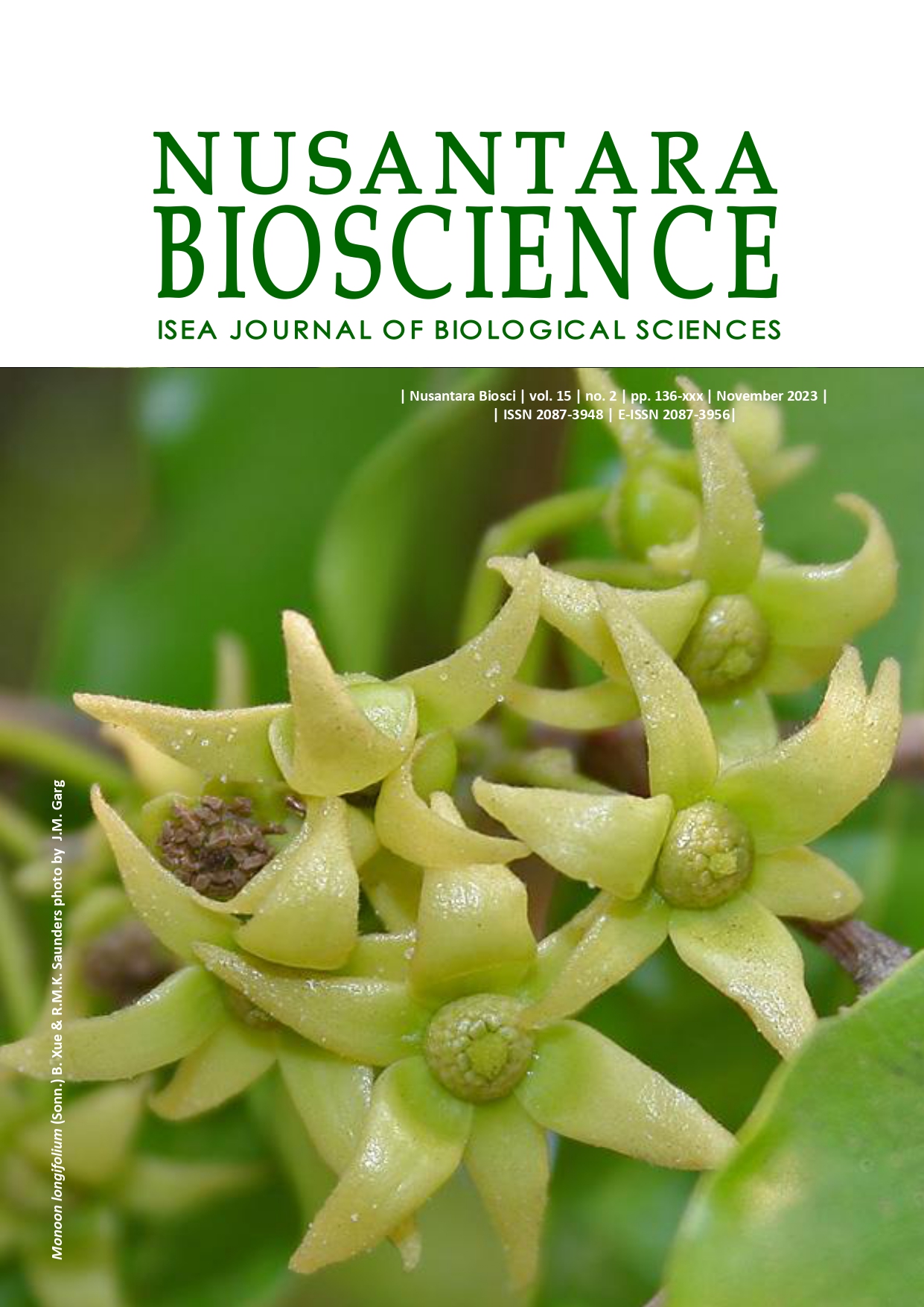Antibacterial activities of Polyalthia longifolia leaf extracts on multiple antibiotic-resistant bacteria isolated from hospital fomites in Akure, Nigeria
##plugins.themes.bootstrap3.article.main##
Abstract
Abstract. Babatunde OJ, Ogundare AO, Adebolu TT. 2023. Antibacterial activities of Polyalthia longifolia leaf extracts on multiple antibiotic-resistant bacteria isolated from hospital fomites in Akure, Nigeria. Nusantara Bioscience 15: 149-160. Polyalthia longifolia (Sonn.), an ornamental plant, is said to be therapeutic while searching for new medications to treat infections caused by multiple Antibiotic-Resistant Bacteria (MAR). This plant's leaves were investigated for prospective antibacterial activity against MAR isolated from fomites in selected hospitals in Akure and their pharmacological properties. Standard microbiological methods were used to isolate and identify bacteria from fomites. Disc diffusion was performed to test their sensitivity to conventional antibiotics and P. longifolia leaf extracts made with ethanol and water. Ciprotab® was used as the control during the antibacterial assay. Therefore, GC-MS analysis was carried out using standard methods to identify the chemicals in the plant leaf extracts. Staphylococcus aureus (29.17%), Streptococcus pyogenes (20.83%), Pseudomonas aeruginosa (14.28%), Escherichia coli (14.28%), Salmonella typhi (12.5%) and Klebsiella pneumoniae (8.33%) were the bacterial species isolated from the fomites sampled in this study. Crude ethanol leaf extract of P. longifolia (100mg/mL) inhibited the growth of these organisms with the greatest effect on P. aeruginosa with a value of 23.83±0.44 mm, which is superior to that medicated by the control antibiotic (ciprofloxacin). The GC-MS analysis of the purified leaf extracts of P. longifolia revealed the presence of bioactive compounds such as n-hexadecanoic acid and phytol, among others. The study revealed that the leaf extracts of P. longifolia can inhibit the growth of the isolated MAR from fomites with an added cidal effect, and the inhibition increase with the increase in concentration and exposure time.
2019-01-01

